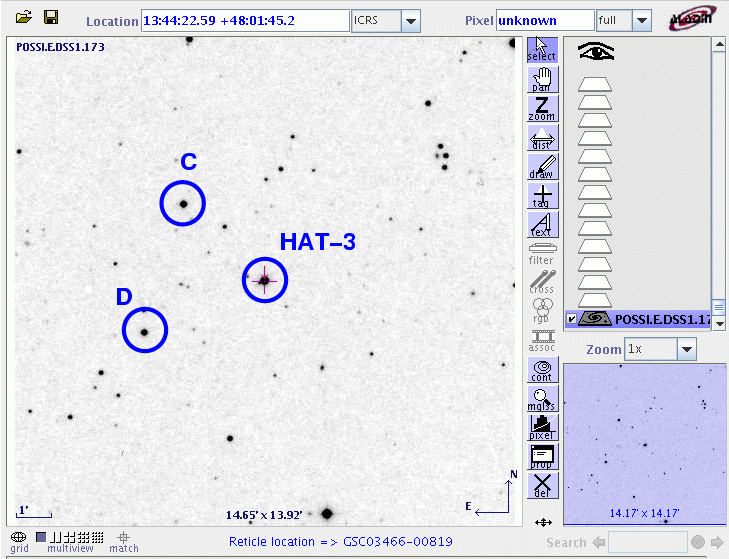
On the night of UT Mar 06, 2008, the SDSS Photometric Telescope ("PT" for short) took a series of exposures of HAT-3. The combination of a late start and cloudy weather meant that we gathered no useful information from the night (in my opinion).
Notes from the night
This is a chart of the field. HAT-3 is the bright star indicated by the crosshairs. The labelled stars will appear in later analysis.

The host star of HAT-3 has a magnitude V=11.59 according to HAT-P-3b: A Heavy-Element-rich Planet Transiting a K Dwarf Star.
Following the procedures outlined by Kent Honeycutt's article on inhomogeneous ensemble photometry, I used all stars available in each image to define a reference frame, and measured each star against this frame. You can find the software package used to do the ensemble photometry online; it's free!
The night was clear at the start, but turned cloudy less than one hour later. The graph below shows the amount by which instrumental magnitudes from each image needed to be shifted to match the ensemble reference. On a clear night, this graph would show a straight horizontal line. The rise stops because the telescope was closed.
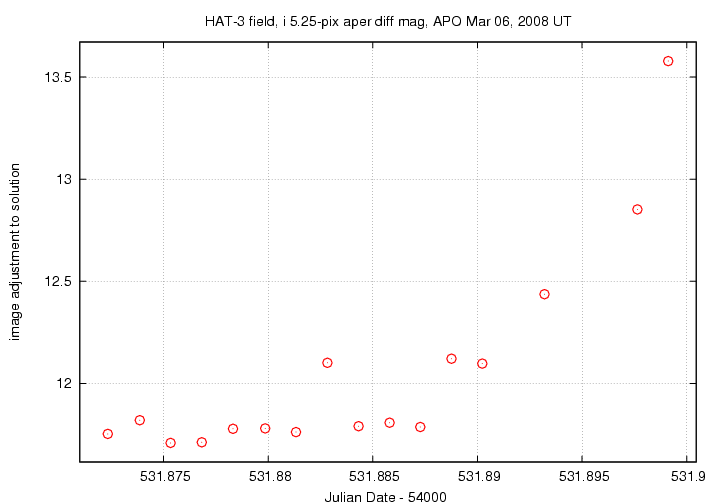
Below is a graph of the scatter in differential magnitude versus magnitude in the ensemble solution.
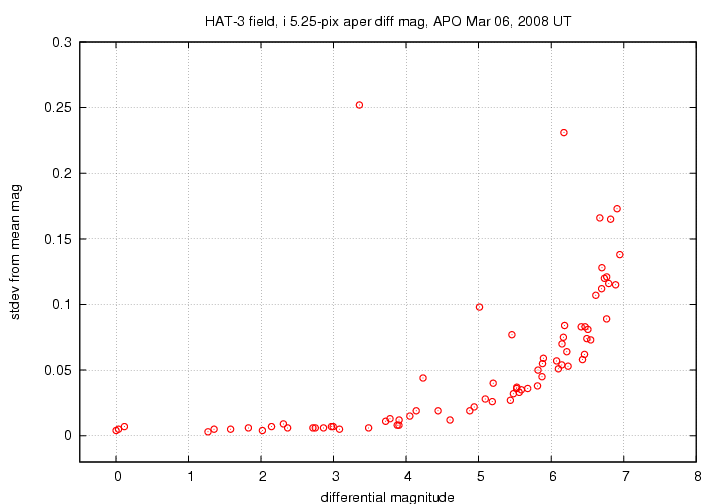
HAT-3 is the star near differential mag 0.1; it shows a small excess of scatter over neighboring stars of the same brightness. The "noise floor" in these measurements is about 0.005 mag -- not good for the PT.
Below are the light curves for the target (green symbols) and some comparison stars in the field.
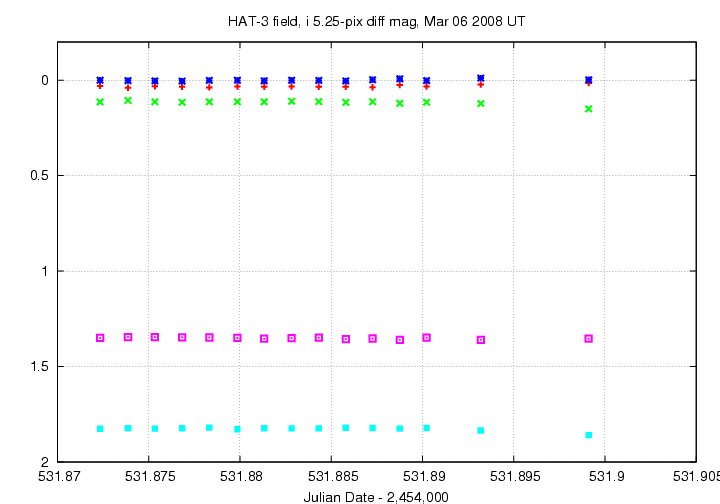
In this closeup, I have shifted the data for two comparison stars to move them closer in magnitude to the target.
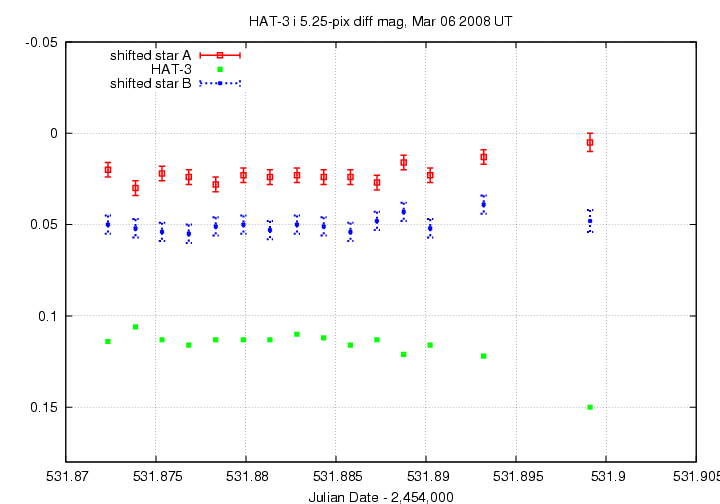
An ephemeris grabbed from transitsearch.org predicts for this night
----------------------------------------------------------------------------------------
Begin Transit Window PREDICTED CENTRAL TRANSIT End Transit Window
All Times UT
HJD Year M D H M
2454531.88 2008 3 6 9 0 2454531.93 2008 3 6 10 15 2454531.98 2008 3 6 11 29
----------------------------------------------------------------------------------------
The ephemeris ingress of UT 2008 Mar 06 09:00:00 corresponds to JD 2,454,531.875, which occurs at the third exposure in the sequence. We do not have enough images before the predicted ingress to determine a good baseline level for the star's light. That, and the lack of any clear drop at about the predicted time, means that we can't make any statements about observed ingress.
The ephemeris egress of UT 2008 Mar 06 11:29:00 is long after the observations end.
You can grab the measurements for your own analysis. Below is a table with three flavors of time, plus the differential magnitude of the target and an estimate of the uncertainty in each measurement. I show the first few lines of the file to give you an idea of its format.
I don't think these measurements are very useful.
# Measurements of HAT-3 made with APO PT, Mar 6, 2008 UT. # Each exposure 45 seconds long in SDSS i-band; # Tabulated times are midexposure (FITS header time - half exposure length) # and accurate only to +/- 1 second (??). # 'mag' is a differential magnitude based on ensemble photometry # using a circular aperture of radius 5.25 arcseconds. # # UT day JD-2,450,000 HJD-2,450,000 mag uncert Mar06.87234 4531.87234 4531.87572 0.114 0.005 Mar06.87387 4531.87387 4531.87725 0.106 0.005
Last modified 03/28/2008 by MWR.